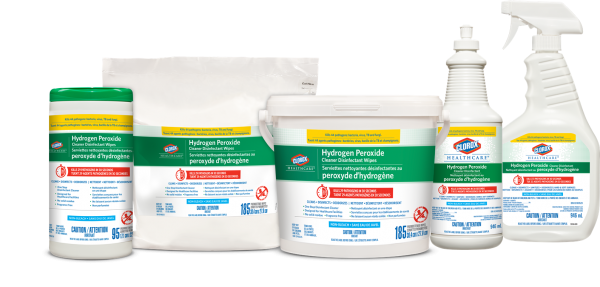CloroxPro Blog – Professional Cleaning and Disinfection Insights
A blog from industry experts devoted to public health awareness, best practices, and the role of environmental cleaning and disinfection, to promote safer, healthier public spaces.
Ready-to-Use vs. Dilutables https://www.cloroxpro.ca/blog/ready-to-use-vs-dilutables/ August 25, 2020 December 23, 2020 https://www.cloroxpro.ca/wp-content/uploads/2020/07/Ready-to-use-dilutables-1-1.pngReady-to-Use vs. Dilutables
Discover the more cost-effective option
The price tag of dilutable disinfectants may seem appealing. Especially as facilities are constantly urged to do more with less these days.
But what you might not realize is that ready-to-use formats save users from incurring hidden costs. Costs arising from cross-contamination, quality control issues and low compliance that have all been associated with dilutable product use.1
Can the use (or misuse) of a disinfectant really have such an impact on our facilities? The evidence leads us to believe so.
What does improper use cost us?
When it comes to dilutables, non-compliance and cross-contamination, in particular, are thought to contribute to hospital-acquired infections, or HAIs.2
That’s a serious consequence considering these are places where people are meant to get well. The Government of Canada reports that more than 200,000 patients get infections every year while receiving healthcare in Canada, and more than 8,000 of these patients die as a result.3,4 Not surprisingly, treatment is more costly than prevention, totaling an estimated $129 million in 2010 alone.4
To prevent contributing to these staggering figures, swapping out dilutable products for ready-to-use cleaners and disinfectants may help hospitals achieve consistent,compliant use for terminal disinfection.
Now, let’s talk about why.

5 ready-to-use advantages you’ve got to see
1. No risk of cross-contamination
Ready-to-use products like Clorox Healthcare® Hydrogen Peroxide Cleaner Disinfectant Wipes are disposed of after each use, eliminating the risk for cross-contamination.
By comparison, reusable cotton and microfibre towels (which are commonly used with dilutable disinfectants) have been shown to harbour microorganisms even after laundering, contributing to cross-contamination.5
2. Better compliance
A study comparing ready-to-use disinfectants with the traditional towel-and-bucket method found significantly higher compliance with ready-to-use products.1
This same study also observed compliance issues with dilutables, including improper dilution, rag reuse, rag double dipping and inadequate rag saturation.1
Intuitively, this seems to make sense. The simpler the user experience, the more likely the product can be used exactly as intended.
3. Time saved
One of the most obvious benefits of ready-to-use disinfectants is how quickly they can be used.
The aforementioned study also found that employees took, on average, 21% less time per patient room when disinfecting with ready-to-use products, translating to a cost savings of $38.58 per employee per day.1
That may not seem significant, but day after day and year after year, the savings add up.
4. Improved quality control
Ready-to-use wipes ensure the proper saturation and concentration of disinfectant in every wipe, every time.
On the other hand, achieving consistent dilution and towel saturation leaves room for human error that can lead to quality control issues.1 Dilution systems also require regular maintenance and testing to ensure proper performance, as environmental factors such as hard water can adversely affect their performance.6
5. Built-in compatibility
Both Clorox Healthcare® Hydrogen Peroxide Cleaner Disinfectant Wipes and Bleach Germicidal Wipes contain wipes that are compatible with our powerful yet safe disinfectants.
Alternatively, using cotton cloths with quaternary ammonium-based disinfectants (the most common type of dilutable product) may result in inadequate transfer of solution to hospital surfaces.7
Even microfibre, which is the preferred vehicle for applying dilutable quaternary ammonium-based disinfectants, has variable performance after repeated washes.8
After all is said and done, it may be time to throw in the towel on dilutable disinfectants.
What about the environmental factor?
It’s easy to assume that ready-to-use disinfectants may not be the environmentally conscious choice, but with Clorox®, that isn’t the case.
Almost all Clorox Healthcare® products are available in recyclable containers. Used pre-moistened wipes should be disposed of, yet the containers can be kept and topped up conveniently with wipe refill bags. Which means less water and energy are spent without the need for constant laundering.
Plus, our products are made in facilities with strict protocols to reduce waste, protect water and reduce greenhouse gas emissions. In fact, our Ontario site lives our values and has achieved zero waste to landfill status, recycling at least 90% of its waste and sending the remainder to a waste-to-energy facility.9
Read more about our commitment to the environment.
References
1. Wiemken TL, et al. The value of ready-to-use disinfectant wipes: Compliance, employee time, and costs. Am J Infect Control 2014;42:329-30.
2. Weinstein RA. Epidemiology and control of nosocomial infections in adult intensive care units. Am J Med 1991;09:179S.
3. Government of Canada. The Chief Public Health Officer’s Report on the State of Public Health in Canada 2013 – Healthcare-associated infections – Due diligence. 2013. https://bit.ly/2AVgHs4. Accessed September 28, 2018.
4. Canadian Patient Safety Institute. Healthcare associated infections. https://bit.ly/2ecb77j. Accessed September 28, 2018.
5. Sifuentes LY, et al. Microbial contamination of hospital reusable cleaning towels. Am J Infect Control 201;41:912-5.
6. O’Neill C, et al. Quality control is indispensable for automated dilution systems with accelerated hydrogen peroxide. Can J Infect Control 2009;24:226-8.
7. Engelbrecht K, et al. Decreased activity of commercially available disinfectants containing quaternary ammonium compounds when exposed to cotton towels. Am J Infect Control 2013;41:908-11.
8. Smith DL, et al. Assessing the efficacy of different microfibre cloths at removing surface micro-organisms associated with healthcare-associated infections. J Hosp Infect 2011;78:182-6.
9. The Clorox Company. Environmental sustainability. https://bit.ly/2Rplqqq. Accessed October 3, 2018.
